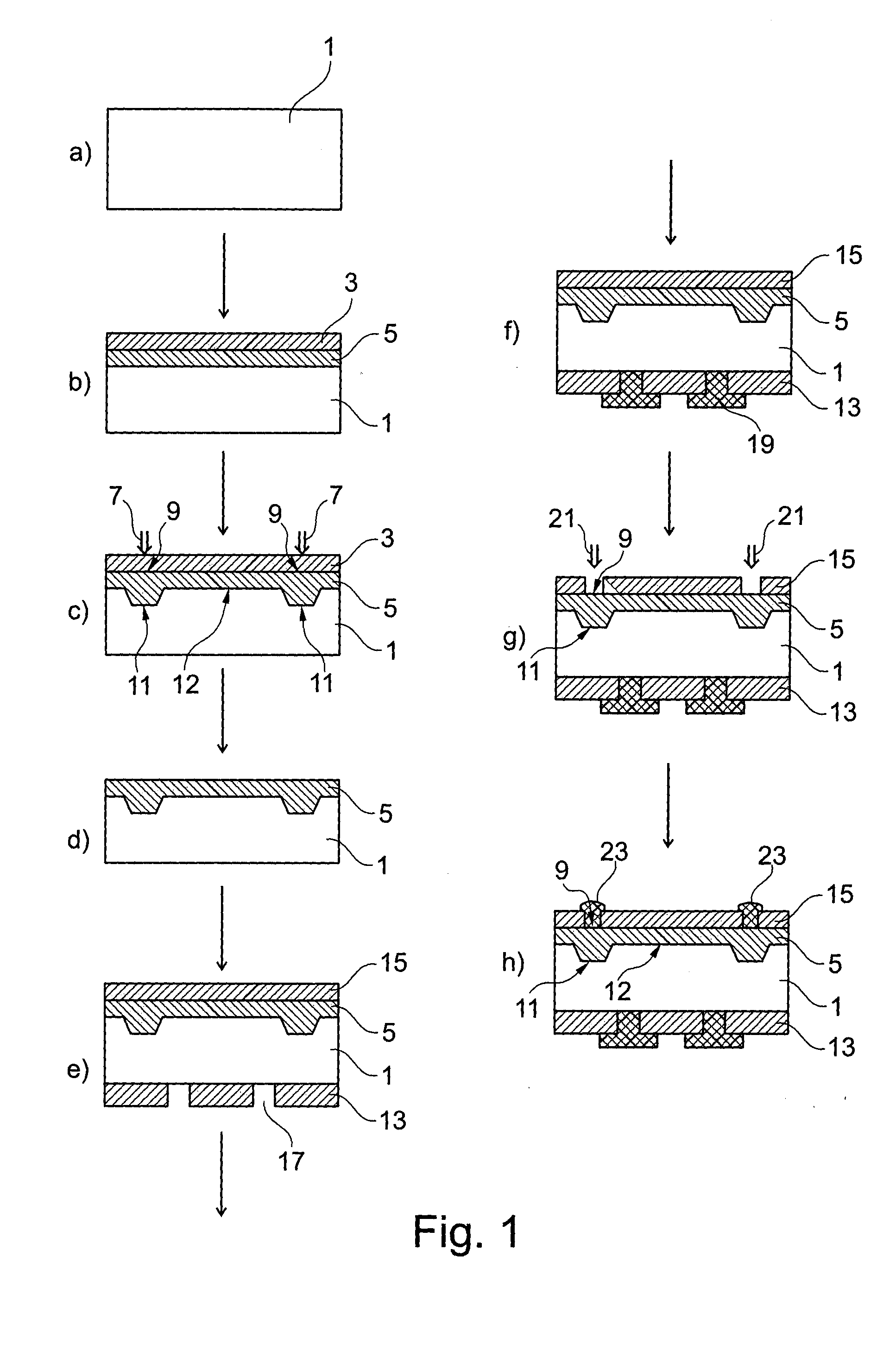Method for forming a solar cell with a selective emitter
- Summary
- Abstract
- Description
- Claims
- Application Information
AI Technical Summary
Benefits of technology
Problems solved by technology
Method used
Image
Examples
Embodiment Construction
[0043]Referring to FIG. 1, a processing sequence for a method of producing a solar cell in accordance with an embodiment of the present invention is described.
[0044]In step (a), a semiconductor substrate 1 is provided as a silicon wafer having a homogeneous p-type base doping. The semiconductor substrate 1 may be pre-treated e.g. with saw-damage removal etch and / or polishing of its backside.
[0045]In step (b), a layer 3 of dopant source material is formed. In the specific example, this layer 3 is formed as a phosphorous silicate glass during a POCl3 diffusion step, in which the semiconductor substrate 1 is held in a POCl3 atmosphere at high temperatures of e. g. 800 to 900 degrees Celsius for a duration of e. g. 10 to 90 minutes.
[0046]Simultaneously with the formation of the layer 3 of dopant source material, dopants from such layer 3 diffuse into the front surface of the semiconductor substrate 1 due to the applied heat thereby forming a homogeneous lightly doped emitter region 5. T...
PUM
 Login to View More
Login to View More Abstract
Description
Claims
Application Information
 Login to View More
Login to View More - R&D
- Intellectual Property
- Life Sciences
- Materials
- Tech Scout
- Unparalleled Data Quality
- Higher Quality Content
- 60% Fewer Hallucinations
Browse by: Latest US Patents, China's latest patents, Technical Efficacy Thesaurus, Application Domain, Technology Topic, Popular Technical Reports.
© 2025 PatSnap. All rights reserved.Legal|Privacy policy|Modern Slavery Act Transparency Statement|Sitemap|About US| Contact US: help@patsnap.com


